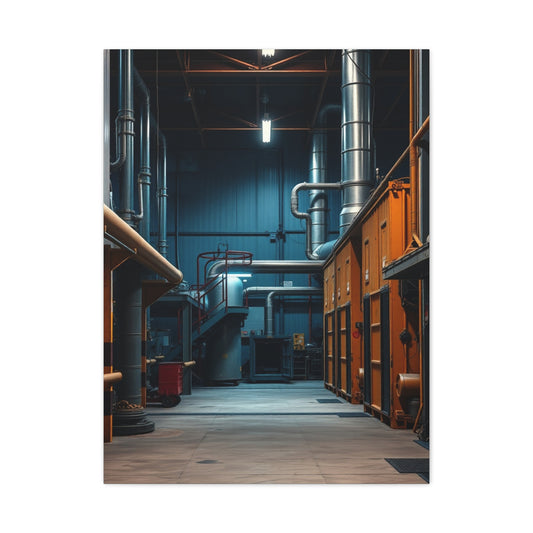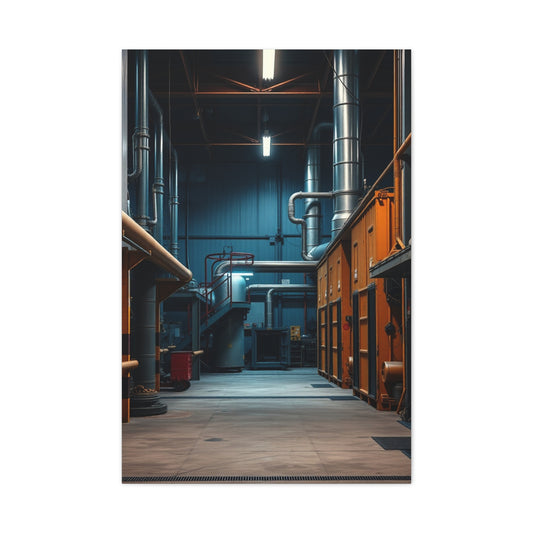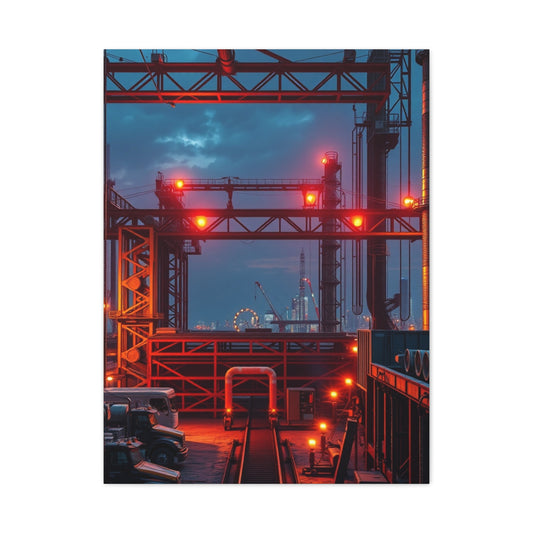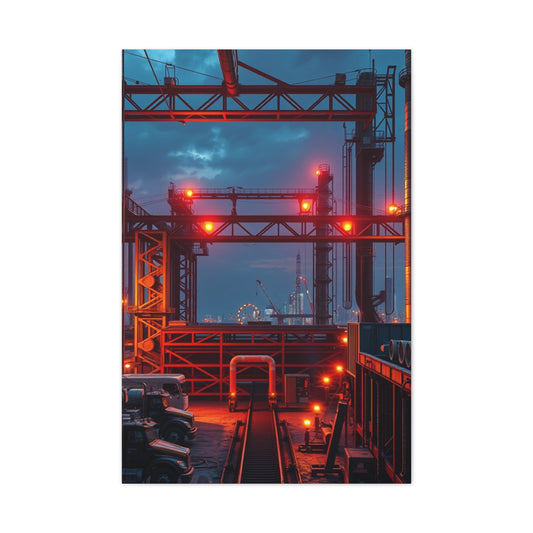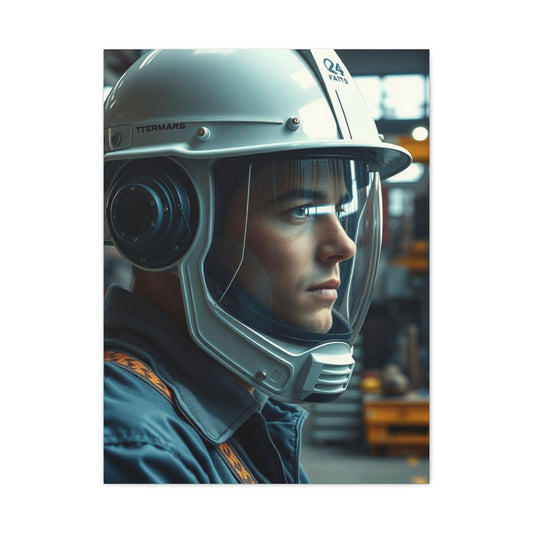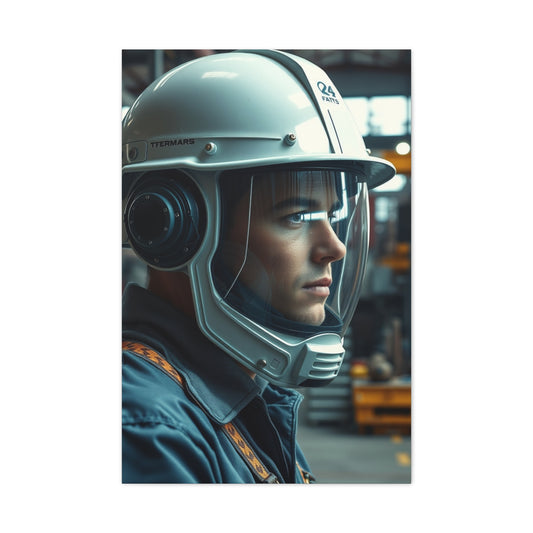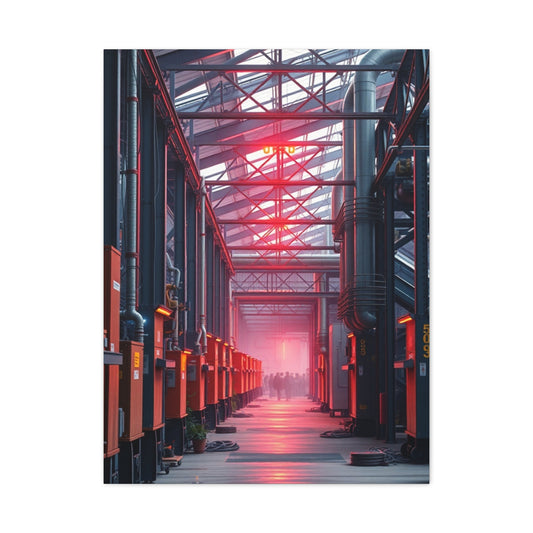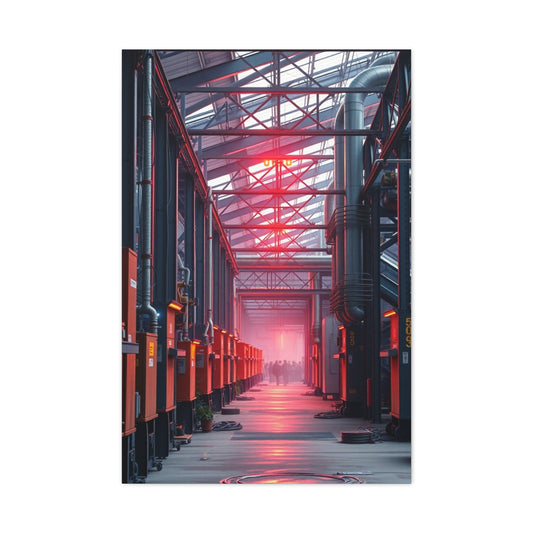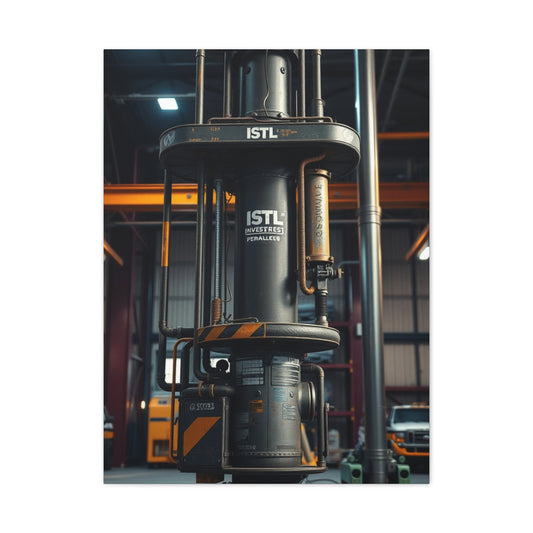In 2025, the landscape of photography has undergone a remarkable transformation, with advancements in technology pushing the boundaries of what was once possible. The lines between professional-grade equipment and consumer-level cameras have become increasingly blurred, making it harder to distinguish between the two. The growing debate among photography enthusiasts, hobbyists, and everyday users now centers on a key question: Should you opt for a point-and-shoot camera or a digital single-lens reflex (DSLR) camera? To answer this, it’s essential to explore the distinct characteristics of both options and understand how modern innovations have changed the game.
Historically, point-and-shoot cameras were seen as entry-level tools, primarily used by casual photographers. These compact devices offered basic functionalities with an emphasis on simplicity and ease of use. However, technological advancements have significantly enhanced the capabilities of these cameras, making them more competitive in the market. Image sensors, lenses, and processing technologies have improved to the point where many point-and-shoot cameras now deliver exceptional image quality, decent zoom ranges, and even high-definition video recording capabilities, including 4K.
On the other hand, DSLR cameras have maintained their reputation as the go-to option for serious photographers, offering a wealth of manual control and superior image quality. While point-and-shoot cameras focus on simplicity, DSLR cameras provide an unparalleled level of creative flexibility, making them a top choice for those who want full control over their photography. The introduction of mirrorless systems has further revolutionized the space, offering an even more compact design without sacrificing the quality that professionals demand.
Point-and-Shoot Cameras: Convenience, Portability, and Accessibility
In today’s fast-paced world, many photographers are looking for gear that can deliver great images without the complexity of more advanced systems. Enter the point-and-shoot camera. These compact devices are designed for users who want to capture quality photos effortlessly and on the go. While they were once regarded as limited tools suitable only for beginners, point-and-shoot cameras have evolved dramatically in recent years. With cutting-edge sensor technology and advanced optics, many of these devices are now capable of capturing images with impressive clarity, color accuracy, and detail.
One of the main selling points of a point-and-shoot camera is its simplicity. The interface is typically intuitive, making it easy for photographers of all skill levels to start shooting right away. Most models offer automatic settings that adjust exposure, focus, and other variables to ensure optimal results with minimal effort. This ease of use is perfect for those who don't want to spend time tweaking settings or learning the technical aspects of photography. With a lightweight, pocket-sized design, point-and-shoot cameras offer an unparalleled level of convenience, making them ideal for travel, casual outings, and everyday moments.
Another significant advantage is their portability. Compared to bulky DSLRs, point-and-shoot cameras are easy to carry around, making them more practical for spontaneous photography. Whether you're at a family gathering, on a vacation, or simply walking around your neighborhood, you can quickly pull out a point-and-shoot camera and capture stunning images without being weighed down by heavy equipment. Additionally, many modern point-and-shoots now come with features like built-in Wi-Fi and Bluetooth connectivity, allowing for easy sharing and uploading of photos directly to social media or cloud storage platforms.
As technology continues to improve, point-and-shoot cameras are equipped with more advanced features. Many now offer zoom lenses that provide decent focal lengths, allowing users to capture a wider range of subjects. Some models even come with 4K video recording, ensuring that your video content is as high quality as your still images. For everyday users who prioritize convenience and simplicity, a point-and-shoot camera is an excellent choice for achieving great results without the need for extensive technical knowledge.
DSLR Cameras: Unrivaled Control, Flexibility, and Creative Potential
While point-and-shoot cameras offer ease of use and portability, DSLR cameras are designed with photographers who desire complete control over their craft. From professional photographers to serious enthusiasts, DSLRs have long been the preferred choice for capturing images with unparalleled detail, dynamic range, and depth. The primary draw of a DSLR lies in its ability to offer manual control over nearly every aspect of the photo-taking process, from aperture and shutter speed to ISO and focal length. These customizable settings empower photographers to experiment and achieve the perfect shot in any given situation.
One of the key advantages of a DSLR is the ability to swap out lenses, allowing for greater creative flexibility. Depending on the type of photography you're pursuingwhether it’s portraiture, landscapes, or wildlife photographychanging lenses opens up a wide range of possibilities. You can select a wide-angle lens for sweeping landscape shots or a telephoto lens for capturing distant subjects with stunning clarity. The ability to choose from an array of lenses tailored to your specific needs makes DSLRs an indispensable tool for professional photographers who require the highest quality results.
Additionally, DSLRs are equipped with advanced autofocus systems that ensure fast, accurate focusing, even in low-light conditions. This is crucial for capturing sharp, detailed images in challenging environments. When paired with a high-quality lens and sensor, DSLRs can produce images that boast exceptional clarity, depth, and color. For photographers who prioritize image quality, the larger sensors found in DSLRs deliver a level of sharpness and depth of field that is difficult to replicate with point-and-shoot cameras.
Another notable advantage of DSLRs is their optical viewfinders. These provide a direct optical view of the scene, offering a true-to-life representation of what the camera sees. Unlike point-and-shoots or mirrorless cameras, which rely on electronic displays, the optical viewfinder allows photographers to see the scene in real time without any delay. This can be especially useful in fast-paced or high-action situations, where timing is crucial.
While DSLRs are typically bulkier and more complex than point-and-shoot cameras, they provide a sense of confidence and control that can be difficult to match. Photographers who are passionate about their craft and eager to explore the full potential of their skills will find DSLRs to be an invaluable tool for expressing their creative vision. Whether you're capturing a moment at a wedding, photographing wildlife in their natural habitat, or shooting a portrait with stunning detail, a DSLR camera offers the flexibility and power necessary to bring your ideas to life.
The Convenience and Simplicity of Point-and-Shoot Cameras
Point-and-shoot cameras have long been a popular choice for individuals who appreciate the joy of capturing moments without being burdened by complicated settings or technical jargon. These cameras are designed with the philosophy that great photos shouldn’t require advanced knowledge or years of practice. They are intuitive devices that cater to people from all walks of lifewhether you're a busy parent trying to preserve family memories or a traveler wanting to document your journey with minimal fuss. The point-and-shoot camera offers simplicity without sacrificing the quality of the photos you take, and that's part of what makes them so attractive.
Another key aspect that draws people to these cameras is their ease of use. Unlike more sophisticated devices that come with a multitude of settings that can overwhelm novice users, point-and-shoot cameras are designed to operate with minimal input from the user. The interface is generally straightforward, with most of the controls being accessible through simple buttons and dials. This ensures that you spend less time fiddling with settings and more time actually enjoying your surroundings and capturing memories. For instance, the automatic settings that handle focus, exposure, and white balance make it so that you don't have to worry about manually adjusting these variables. This kind of seamless experience makes it perfect for spontaneous moments, where you want to act quickly to capture a memory before it slips away.
Portability is another standout feature of point-and-shoot cameras. The compact nature of these devices makes them incredibly easy to carry around. Unlike bulky DSLRs or mirrorless cameras, which may require a large bag or specialized case, a point-and-shoot camera can slip easily into a pocket or small handbag. This portability makes it perfect for situations where you want to be prepared but don't want to be weighed down by heavy gear. Whether you’re on a trip, at a family gathering, or simply out running errands, you can have a point-and-shoot camera with you without it becoming a hassle. This accessibility is invaluable in capturing those fleeting, impromptu moments that occur when you least expect them, allowing you to act quickly without any of the drawbacks that come with larger, more cumbersome equipment.
For those who may not have an interest in diving into the intricacies of photography but still want to take beautiful pictures, point-and-shoot cameras fill an important gap. It’s not just about capturing memories; it’s about the ease of use that allows almost anyone to get great shots without the frustration of adjusting complicated settings. The automatic focus, exposure adjustments, and integrated flashes help ensure that photos are well-lit and sharp, even in challenging conditions like dim lighting or bright sunlight. These features give users the confidence that they can get clear, professional-looking photos without having to be constantly adjust or second-guess their settings.
Moreover, point-and-shoot cameras are equipped with zoom lenses, allowing users to get close-up shots without physically being in close proximity to their subject. This feature enhances their versatility, making them suitable for a wide range of situations, from taking portraits to capturing landscapes or wildlife. Even though point-and-shoot cameras are typically smaller in size, they don’t compromise on features, and the zoom capabilities often rival those of more advanced cameras.
Additionally, the convenience of built-in editing features on many point-and-shoot models means that you can enhance your photos right away, without needing separate editing software or technical skills. Whether you want to adjust the brightness, crop an image, or apply filters, these cameras make it easy to perform basic edits directly on the device. This can be especially useful for sharing images quickly with friends or family, or for uploading to social media without having to wait for additional processing.
In today’s fast-paced world, where time and spontaneity are precious, point-and-shoot cameras are more than just tools for taking pictures; they are companions that help preserve life’s most memorable moments. The freedom that comes with knowing you can simply point, shoot, and trust the camera to handle the technical details is liberating for many users. It removes barriers and allows people to focus on the experience of capturing a moment rather than worrying about settings or equipment.
Furthermore, the affordability of point-and-shoot cameras makes them accessible to a wider audience. While high-end digital cameras and smartphones with advanced camera functions can come with hefty price tags, point-and-shoot models offer a more budget-friendly alternative without sacrificing too much in terms of image quality. For individuals who want a reliable camera without breaking the bank, a point-and-shoot model offers great value for money.
Despite the rise of smartphone cameras, which offer impressive capabilities, point-and-shoot cameras still maintain a strong presence due to their dedicated design. A point-and-shoot camera often outperforms smartphones in terms of pure image quality, especially in terms of zoom capabilities and lens clarity. Smartphone cameras, while convenient, may struggle to achieve the same depth and sharpness in photos as a dedicated point-and-shoot camera. Additionally, having a separate camera allows you to focus more on photography without the distractions of notifications, social media, or apps that come with using a smartphone camera.
Ultimately, the charm of point-and-shoot cameras lies in their simplicity, portability, and user-friendly design. For individuals who appreciate the convenience of snapping high-quality photos without needing to worry about technical adjustments, these cameras are an ideal choice. They bridge the gap between ease of use and excellent image quality, providing a solution for anyone looking to capture memories effortlessly. Whether you’re capturing a candid moment with friends, documenting your travels, or preserving a family milestone, point-and-shoot cameras are reliable, accessible, and simple, making them an invaluable tool for everyday photographers.
Advanced Features and Versatility of Modern Point-and-Shoot Cameras
Despite their emphasis on simplicity, modern point-and-shoot cameras come with some surprising features that make them more versatile than their older counterparts. Many of today’s models allow for manual control over certain aspects like aperture and exposure, which adds an element of customization for users who want to experiment with their photos. This allows you to exercise more creative control over your shots, but without the complexity of adjusting every individual setting manually.
While these cameras are primarily geared toward automatic operation, they have come a long way from their early days, when adjustments were almost impossible. Many modern point-and-shoot models now include modes that allow for some control over things like depth of field, motion blur, and even some exposure adjustments. This flexibility provides photographers with more options to tailor their photos while still keeping the overall process simple and accessible.
However, it's important to note that these advancements in functionality don’t turn point-and-shoot cameras into full-fledged professional tools. While the ability to adjust aperture and exposure is a great addition, these cameras still rely heavily on automation. Settings like white balance, focus, and flash are generally handled automatically, allowing users to focus on framing their shots rather than tinkering with the camera's intricate controls.
One of the areas where these cameras still struggle is low-light performance. Due to the small size of their sensors, point-and-shoot cameras may have difficulty producing high-quality images in dim environments. The smaller sensor size often leads to lower resolution and higher image noise in darker settings. This can be a challenge for photographers who want to take great photos indoors or in the evening. Nevertheless, in well-lit situations, point-and-shoot cameras shine, offering crisp, clear photos with minimal effort from the user.
The Drawbacks of Fixed Lenses and Sensor Limitations
A significant limitation of point-and-shoot cameras is their fixed lens design. Unlike more advanced models such as DSLRs or mirrorless cameras, point-and-shoot cameras do not offer the flexibility of interchangeable lenses. This means that photographers cannot swap out lenses to suit specific shooting needs or environments. For example, you may find that the lens on a point-and-shoot camera doesn’t have the same depth or zoom capability as a high-end DSLR lens, limiting your options in certain scenarios.
While many point-and-shoot cameras feature impressive zoom ranges, these lenses are generally more limited when it comes to aperture flexibility. A wide aperture allows more light to enter the camera, which is especially important in low-light situations. Point-and-shoot lenses typically have a smaller aperture range, which can impact the quality of photos taken in darker environments. This is a tradeoff for their compact size and ease of use, but it’s something to keep in mind if you’re looking for more versatile lenses that can handle a variety of lighting conditions.
Moreover, the smaller sensors in point-and-shoot cameras contribute to lower image quality compared to larger sensors found in professional-level cameras. While they’re perfectly fine for casual photographers, these smaller sensors tend to struggle with producing high-resolution images, especially in situations that require precise detail or color accuracy. If you plan on printing large photos or cropping images heavily, you might notice a loss in detail or an increase in image noise.
Despite these limitations, point-and-shoot cameras are still an excellent choice for people who prioritize convenience over technical control. They’re perfect for everyday use, capturing family moments, vacations, or spontaneous shots without requiring a lot of preparation or technical expertise. The combination of portability, ease of use, and affordability makes them an attractive option for casual photographers who want to capture life’s moments with minimal hassle.
Point-and-shoot cameras may not be the best choice for professional photographers or enthusiasts looking for complete control over their shots, but they excel at providing a quick and easy solution for those who simply want to snap pictures without worrying about complicated settings. For many, the ability to pull out the camera at a moment’s notice and capture a special moment far outweighs the need for manual adjustments or interchangeable lenses.
While these cameras may not match the performance of more advanced systems in terms of image quality or low-light capabilities, they offer exceptional value for users who want a no-fuss experience. They remain an enduring favorite among those who appreciate the ease of use and portability that comes with point-and-shoot photography. If you’re someone who loves to take pictures on the go without getting bogged down by settings, a point-and-shoot camera is likely a perfect fit for you.
The Power of DSLRs: Unmatched Control and Customization
For photography enthusiasts who crave complete control over their craft, a DSLR camera offers an unparalleled experience. Unlike point-and-shoot models, which typically come with fixed lenses and automatic settings, DSLRs provide photographers the opportunity to customize virtually every aspect of their image-making process. This level of creative freedom is precisely why DSLRs remain the go-to choice for those who want to dive deep into the world of photography and push their artistic boundaries. With interchangeable lenses, manual controls, and cutting-edge technology, DSLRs offer more than just a snapshot; they provide an immersive, hands-on journey into the art of capturing moments.
The first and foremost advantage that DSLRs bring to the table is their image quality. These cameras are designed with larger sensors that are capable of capturing much more light and detail than their point-and-shoot counterparts. The result? Sharper, more vibrant images with a level of clarity that truly stands out. Whether you're shooting in well-lit conditions or struggling with low light, DSLRs excel at delivering crisp, beautiful images. With the superior low-light performance of DSLRs, photographers are able to shoot in environments that would otherwise be challenging, such as dimly lit indoor settings or outdoor night scenes. Moreover, the higher megapixel counts found in DSLRs allow for greater detail, making them ideal for everything from landscape photography to highly detailed portrait shots.
One feature that makes the DSLR experience even more dynamic is the ability to swap out lenses. This option opens up a world of creative possibilities, allowing photographers to experiment with different focal lengths, apertures, and depths of field. Whether you want to create a beautiful, blurred background effect for your portrait or capture a sweeping landscape in stunning detail, the right lens can make all the difference. DSLRs not only give you the tools for greater artistic freedom, but they also enhance the technical precision with which you capture your subjects.
The Advantage of the Optical Viewfinder
Another standout feature of DSLR cameras is the optical viewfinder. Unlike digital viewfinders, which are commonly found in compact cameras, the optical viewfinder in a DSLR allows you to see the scene directly through the lens. This direct connection between the lens and the viewfinder means that you get a real-time, undistorted view of what you are capturing. The result is a much more accurate representation of the scene, making it easier to compose and frame your shots to perfection.
This feature is particularly valuable for photographers who focus on portraiture and landscape photography, as the ability to see the scene without any lag or digital interference ensures that every shot is framed exactly as intended. Additionally, the optical viewfinder provides a more intuitive shooting experience, offering a more natural way to compose your shots compared to the electronic viewfinders used in point-and-shoot models. For those who prefer to shoot in manual mode, the optical viewfinder provides a more immersive, tactile connection with the camera, allowing for precise control over how the final image will look.
Customization and Control at Your Fingertips
One of the most significant reasons photographers gravitate towards DSLRs is the immense level of control they offer. By allowing users to manually adjust key settings such as ISO, shutter speed, and aperture, these cameras enable a degree of customization that other models simply cannot match. This level of control empowers photographers to manipulate exposure and depth of field in ways that align perfectly with their artistic vision.
For instance, adjusting the ISO allows photographers to control the sensitivity of the camera's sensor to light, while adjusting the shutter speed lets them either freeze fast-moving action or create beautiful motion blur for artistic effect. Aperture adjustments, on the other hand, control how much light enters the lens and influence the depth of the field in an image. Whether you're aiming for a shallow depth of field that isolates your subject from the background or need to ensure everything in your frame is in focus, DSLRs give you the tools to achieve the exact look you're going for.
Furthermore, the ability to shoot in manual mode means that photographers are not at the mercy of the camera’s automatic settings. With the right understanding of how to balance the various settings, photographers can fine-tune every aspect of their shot. This flexibility is invaluable for capturing fast-moving subjects, creating artistic bokeh effects, or producing images that have a perfect balance of exposure and clarity. The hands-on approach to photography that a DSLR encourages opens up a whole new world of creative possibilities.
The Challenges of Mastering a DSLR
Of course, this level of control and customization doesn't come without its challenges. DSLRs are significantly heavier and bulkier than their point-and-shoot counterparts, which can make them less portable and harder to carry around for extended periods. For photographers who enjoy street photography or traveling light, the added weight and size of a DSLR can feel cumbersome. Additionally, the necessity of investing in extra lenses, flashes, and other accessories can quickly add up, making DSLR photography a more expensive endeavor than simply using a compact or smartphone camera.
There’s also a learning curve involved with mastering a DSLR. While these cameras provide advanced functionality, they can be overwhelming for newcomers who are unfamiliar with manual controls and photographic concepts like the exposure triangle, focal length, and depth of field. Understanding how to balance settings and choose the right lens for a particular situation takes time and practice. For those new to photography, it might feel like a steep learning curve, but once these concepts are understood, the creative freedom and control offered by a DSLR are worth the effort.
Moreover, while DSLRs can be incredibly versatile, troubleshooting potential issues such as incorrect exposure, blurry images, or focusing challenges requires a certain degree of technical know-how. There’s no automatic mode that can do everything for you, and many photographers enjoy the process of experimenting and problem-solving to achieve the perfect shot. However, this aspect can be frustrating for beginners who may not yet have the confidence or experience to adjust settings quickly and effectively.
Why Invest in a DSLR
Despite the potential challenges, many photographers swear by DSLRs due to the unparalleled quality and versatility they offer. Whether you're an aspiring photographer looking to take your skills to the next level or an experienced professional who requires the best tools for the job, a DSLR camera provides a platform for creative exploration that simpler cameras cannot match. With their superior image quality, customizable settings, and the ability to experiment with different lenses and techniques, DSLRs allow you to capture stunning images that stand out from the crowd.
In addition to their outstanding image quality, DSLRs offer a level of adaptability that can enhance your shooting experience. With the right settings, you can shoot in a wide range of conditions, whether you’re capturing fast-moving sports events, low-light environments, or stunning landscapes. The level of creative freedom and technical precision offered by DSLRs makes them the ideal choice for photographers who want to take full control of their craft.
However, it’s important to remember that with great power comes great responsibility. While the DSLR offers a wealth of features and options, it also demands time, effort, and patience to truly master. But for those willing to put in the work, the rewards are well worth the investment. Whether you're capturing memories for personal enjoyment or creating professional-grade photographs, a DSLR camera ensures that your images are more than just picturesthey become a powerful expression of your artistic vision.
Point-and-Shoot Cameras: Ideal for Simplicity and Convenience
Point-and-shoot cameras have long been favored for their ease of use and portability, making them a top choice for those who want a reliable camera for casual photography. These cameras are perfect for those who aren’t looking to dive into the complexities of manual controls but still want high-quality results for everyday moments. Whether it’s family gatherings, vacations, or capturing memories on the go, point-and-shoots can provide sharp, vibrant images without requiring too much technical knowledge.
One of the main advantages of a point-and-shoot camera is its simplicity. These devices typically feature automatic settings that adjust the exposure, focus, and other important aspects of the shot, allowing you to focus purely on framing the image. For beginners or those who don’t have the time or inclination to learn about apertures, shutter speeds, or ISO settings, a point-and-shoot camera is an ideal option.
Beyond the ease of use, modern point-and-shoot cameras have advanced significantly in terms of image quality. Many of these devices now feature high-resolution sensors, optical zoom capabilities, and a variety of scene modes that help you achieve the desired effect in various situations, such as low-light environments or bright outdoor settings. For those who want a camera that offers excellent results with minimal effort, the point-and-shoot remains a reliable and effective option.
Additionally, these cameras are highly portable, often small enough to slip into a pocket or small bag. This makes them an excellent choice for people who want to carry a camera without the bulk and weight associated with larger, more complex systems. The compact design also means you can quickly pull the camera out for spontaneous moments without missing a beat.
In terms of budget, point-and-shoot cameras tend to be more affordable than DSLRs, making them a great option for those who don’t want to make a significant financial commitment upfront. They are also ideal for those who don’t plan to invest a great deal of time in mastering photography techniques but still want to capture memorable moments with good image quality.
DSLR Cameras: Unmatched Flexibility and Control for Serious Photographers
On the other hand, if you’re passionate about developing your photography skills, a DSLR (Digital Single-Lens Reflex) camera could be the perfect fit for your needs. While point-and-shoot cameras shine in terms of simplicity, DSLRs provide a level of control and customization that is hard to match, giving photographers the ability to fine-tune every aspect of their shots.
DSLR cameras are designed for those who want to take their photography to the next level. They allow for full manual control over settings like aperture, shutter speed, and ISO, offering a deeper level of creativity and versatility. For those who are serious about their craft, whether in landscape, portrait, sports, or wildlife photography, a DSLR can provide a broader creative canvas. The flexibility to adjust these settings is crucial for achieving specific effects, such as creating a shallow depth of field or freezing fast-moving action with perfect sharpness.
One of the most significant advantages of a DSLR is the ability to interchange lenses. While a point-and-shoot camera comes with a fixed lens, DSLRs give you the freedom to choose different lenses depending on the type of photography you're interested in. A wide-angle lens for landscapes, a telephoto lens for wildlife or sports, and a macro lens for extreme close-ups are just some of the possibilities. This wide range of lenses allows for greater control over composition and the overall feel of your images, making DSLRs a great choice for those who want to experiment with different techniques and perspectives.
Another standout feature of DSLRs is their image quality. Thanks to larger image sensors, these cameras produce sharper, more detailed photos, with better color accuracy and improved performance in low-light conditions. Whether you’re photographing in dimly lit environments or under bright sunlight, a DSLR will give you the capability to capture images with stunning clarity and depth. The superior sensor technology found in DSLRs also allows for better noise reduction at higher ISO levels, meaning you can capture clearer images even in challenging lighting conditions.
However, all of this flexibility and power come with a trade-off. DSLRs are significantly larger and heavier than point-and-shoot cameras, which can make them less convenient for casual or everyday use. Carrying around a DSLR with multiple lenses can feel cumbersome, particularly when traveling or attending events. Additionally, DSLR cameras require more time and effort to learn, as mastering manual settings and understanding the different lenses and accessories can be a steep learning curve for beginners.
Lastly, DSLR cameras are generally more expensive than point-and-shoot models. Between the body of the camera and the various lenses and accessories you might need to purchase, the initial investment can be quite substantial. However, for serious photographers who are committed to improving their skills and want a tool that grows with them, this investment is often worth the price.
Choosing the Right Camera Based on Your Photography Goals
The choice between a point-and-shoot camera and a DSLR ultimately comes down to your personal photography goals, budget, and how much effort you're willing to invest in learning your gear. If you want a camera that’s easy to use, portable, and capable of capturing high-quality photos without a steep learning curve, a point-and-shoot is likely your best bet. They are fantastic for everyday moments, travel, and family photos, offering great performance in a compact, user-friendly design.
However, if you’re serious about improving your photography and are willing to dedicate time to learning manual settings, understanding different lenses, and exploring creative techniques, a DSLR could be the right choice. DSLRs provide unmatched control, image quality, and flexibility, making them an excellent choice for those who are passionate about capturing more than just basic snapshots. Whether you’re photographing a breathtaking landscape, a sporting event, or a portrait, a DSLR allows you to have full creative control over every shot, giving you the tools to push your photography skills to new heights.
In the end, both point-and-shoot and DSLR cameras have their merits. The best choice for you will depend on the type of photography you’re interested in, your level of expertise, and how much you’re willing to invest in your equipment. If you prioritize simplicity, portability, and affordability, a point-and-shoot camera will offer you ease of use without sacrificing image quality. But if you’re eager to dive deep into the world of photography and develop your skills, the versatility of a DSLR will offer you endless possibilities to grow and refine your craft.
When making your decision, ask yourself the following questions: What type of photography excites you the most? Do you need a camera that’s easy to carry and quick to use, or are you looking for something that gives you more control over every shot? Do you have the time and commitment to learn all the ins and outs of a more complex system? These reflections will guide you in making the decision that will best enhance your photography journey in 2025.












